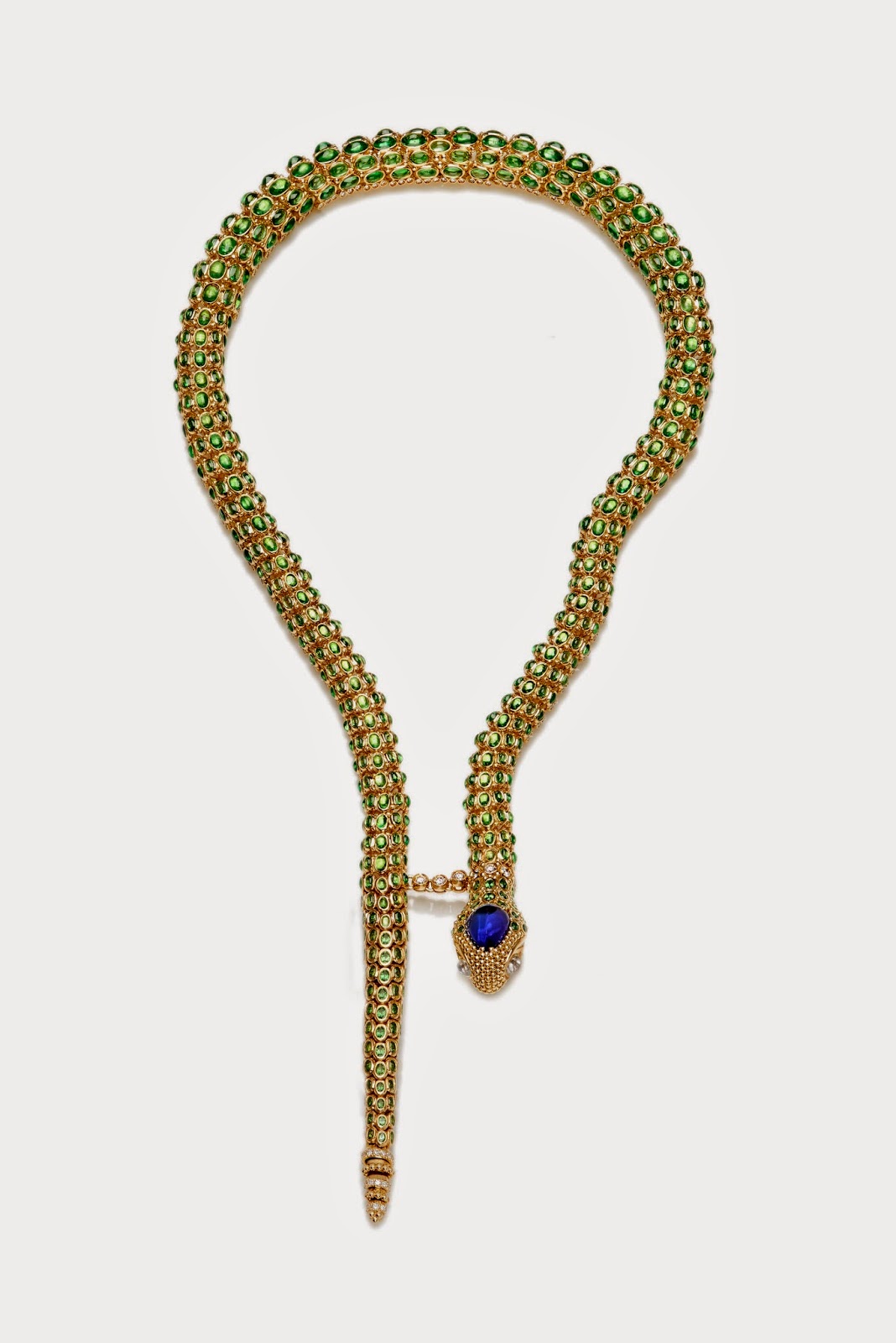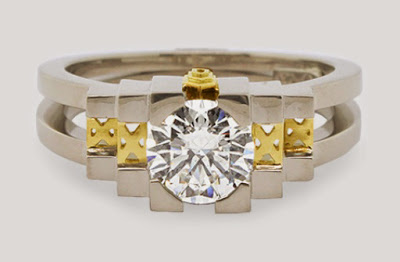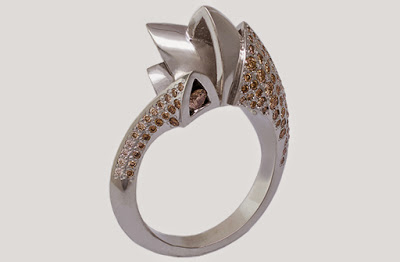Burmese rubies, colored diamonds and Cartier jewels led Sotheby’s Hong Kong Fine Jewels and Jadeite sale.
The top lot was a ruby and diamond necklace with 50.57 carats of unheated “Pigeon’s Blood” Mogok Burmese rubies that sold for $805,128 (top photo).
The necklace is set with 37 graduated oval rubies, decorated with approximately 42.70 carats of pear-shaped and brilliant-cut diamonds mounted in 18k white and yellow gold.
Other items of note at the November 28 sale include the following:
* A 13.88-carat fancy intense yellow diamond and white diamond ring sold for $466,667. The yellow diamond is flanked by two trapeze-shaped diamonds together weighing approximately 3 carats, mounted in platinum and 18k yellow gold.
* A Cartier “Tiger” clip-brooch sold for $451,282, more than double its high estimate of $206,352. Set with brilliant-cut yellow diamonds and diamonds together weighing approximately 9.95 carats, speckled by onyx, embellished by pear-shaped emerald-set eyes, mounted in 18k yellow gold, signed and numbered.
* A 4.79-carat unheated “Pigeon’s Blood” Mogok Burmese ruby and diamond ring by Cartier sold for $435,897. The oval ruby is flanked on each side by a half-moon shaped diamond, decorated by brilliant cut and baguette diamonds together weighing approximately 1.30 carats, mounted in platinum, signed and numbered.
* Fancy intense yellow diamond and white diamond ear clips that sold for $312,821. Each ear clip has a cut-cornered rectangular modified brilliant-cut fancy intense yellow diamond weighing 6.30 and 6.15 carats respectively, suspended from a pear-shaped and brilliant-cut diamonds weighing a total of 4.45 carats, mounted in platinum and 18k yellow gold.
The 180-lot auction of signed pieces, colored gems and diamonds, modern and vintage pieces, and a charity session to aid Operation Smile China Medical Mission, which provides free surgery to underprivileged children and young adults with cleft lips or cleft palates in China, fetched more than $7.85 million, with 87.2 percent of the items sold by lot and 75.8 percent sold by value.
Please join me on the Jewelry News Network Facebook Page, on Twitter @JewelryNewsNet and on the Forbes website.











%2BCartier.jpg)
%2BCartier.jpg)
%2BCartier.jpg)
%2BCartier_blk.jpg)

%2BCartier.jpg)

%2BCartier.jpg)
%2BCartier.jpg)
%2BCartier.jpg)
%2BCartier.jpg)
%2BCartier.jpg)


.jpg)
.png)
.png)



.png)

.png)
.jpg)
.jpg)
.jpg)
.jpg)
.jpg)
.jpg)
.jpg)
.jpg)
.jpg)





















